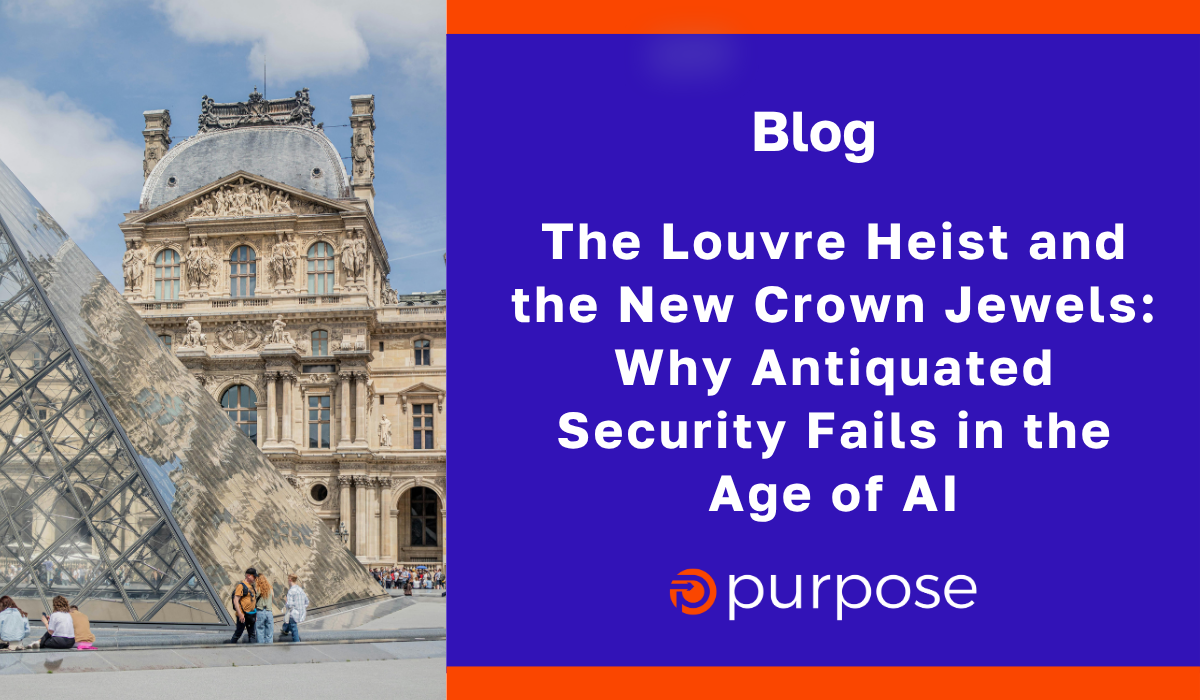By: Jerry Bui, SVP of Digital Forensics, Purpose Legal
Over the weekend, the unthinkable happened in Paris. In broad daylight, a group of thieves posing as maintenance workers used a construction lift to scale the side of the Louvre, smashed into the Galerie d’Apollon, and escaped with several of France’s crown jewels—emerald and diamond pieces that once belonged to Empress Eugénie and Queen Marie-Amélie.
The entire operation lasted less than seven minutes.
According to reports from Le Monde and Reuters, the heist succeeded not because of genius or brute force, but because the museum’s security infrastructure was antiquated—camera blind spots, outdated alarms, and legacy access controls that hadn’t evolved with modern threats. In essence, the Louvre was protecting 19th-century treasures with 20th-century systems in a 21st-century world.
That, to me, is the perfect metaphor for where many enterprises stand today.
The Modern “Crown Jewels” Are Digital
For organizations, the crown jewels aren’t locked in display cases anymore—they live in the cloud. I’m talking about Copilot artifacts, prompt libraries, embedding stores, AI training data, and the logs that document every generative interaction. These are the new assets of power and provenance—the digital equivalents of royal regalia.
And yet, they’re often protected by governance models and retention settings that feel just as outdated as the Louvre’s cameras. Many enterprises still treat AI artifacts as byproducts, not as business-critical records. They’re scattered across Microsoft 365 tenants, Azure regions, and application logs—unlabeled, unmonitored, and rarely mapped to compliance or eDiscovery plans.
If the Louvre’s mistake was trusting old locks to guard irreplaceable jewels, ours is trusting default cloud settings to protect irreplaceable knowledge.
Updating the Enterprise Playbook
I’m updating my Enterprise AI Governance Playbooks to focus on where Copilot artifacts live, how long they’re retained by default, and what steps organizations must take to govern, preserve, extract, and produce them responsibly.
Here’s what that looks like in practice:
🧭 Map the Vault: Know Where Copilot Artifacts Reside
Copilot generates chat histories, prompt metadata, embeddings, and model versions, stored across M365 and Azure substrates. By default, much of this persists for up to 90 days, even in “ephemeral” configurations. We help clients map these locations and treat them as structured, governable data zones—not exhaust.
🗄️ Retention Defaults Aren’t Security
Retention isn’t governance. Copilot logs may remain accessible longer than teams expect, especially for diagnostic or service-improvement purposes. Our recommendation: define custom retention policies that align with your legal and regulatory posture. Use Microsoft Purview to apply retention labels and adaptive scopes to AI data just as you would to mailboxes or Teams messages.
🔐 Governance and Access Control
- Maintain an inventory of AI assets—prompts, logs, model weights, embeddings—and classify them by sensitivity.
- Enforce RBAC and least-privilege access for all AI-related repositories.
- Integrate Copilot artifacts into your broader information governance and compliance map.
🧮 Preservation, Extraction, and Production
- Preserve key artifacts with immutable logging and metadata provenance.
- Extract and export AI artifacts using forensically sound methods—including hash validation and timestamping.
- Define production protocols for when AI data must be provided in litigation or regulatory review.
From the Louvre to the Cloud: A Lesson in Modernization
The Louvre’s jewel cases were beautiful but obsolete. Their cameras worked—but only in parts of the gallery. Their alarms triggered—but seconds too late. They had security, but not governance.
That’s the same blind spot I see in enterprises every week. Organizations think “we have Purview,” or “we’re on E5,” or “our cloud is encrypted,” and believe they’re covered. But encryption isn’t governance, and default retention isn’t a risk strategy.
The Louvre heist shows us what happens when institutions fail to modernize the systems that protect their heritage. In our digital era, AI artifacts are our heritage—the record of how humans and machines reason together.
Protect them like you would a crown.



